What's the best time to visit Antarctica?
The best time to visit Antarctica is during the Southern Hemisphere summer, particularly in December, for milder weather and abundant wildlife. March offers budget-friendly options and unique wildlife interactions, albeit with less predictable weather. Avoid the Southern Hemisphere winter (April to October) due to extreme cold and inaccessibility.
Antarctica is a once-in-a-lifetime destination. The trek to the frozen southern continent isn’t easy, but you’ll be rewarded with views and memories to last a lifetime.
The frozen landscapes of Antarctica are the only thing to see in this destination — but they certainly are spectacular things to see. Admire the massive glaciers and icebergs (from a safe distance, of course).
Explore the surprisingly varied landscape, such as the dramatic landscapes of Paradise Bay. You can also get close to the local wildlife, especially massive colonies of penguins.
For the adventurous, there are plenty of activities that tour companies offer visitors to Antarctica. Go kayaking, take a helicopter over remote areas of the continent, or hunker down in a bivouac bag for an unforgettable camping experience.
But it’s important to know the best time to visit Antarctica, as conditions aren’t always passable. We’ll show you the best, least busy, cheapest, and worst times to go to help you maximize your budget and time; let us be your guide!
Overall Best Time to Visit Antarctica
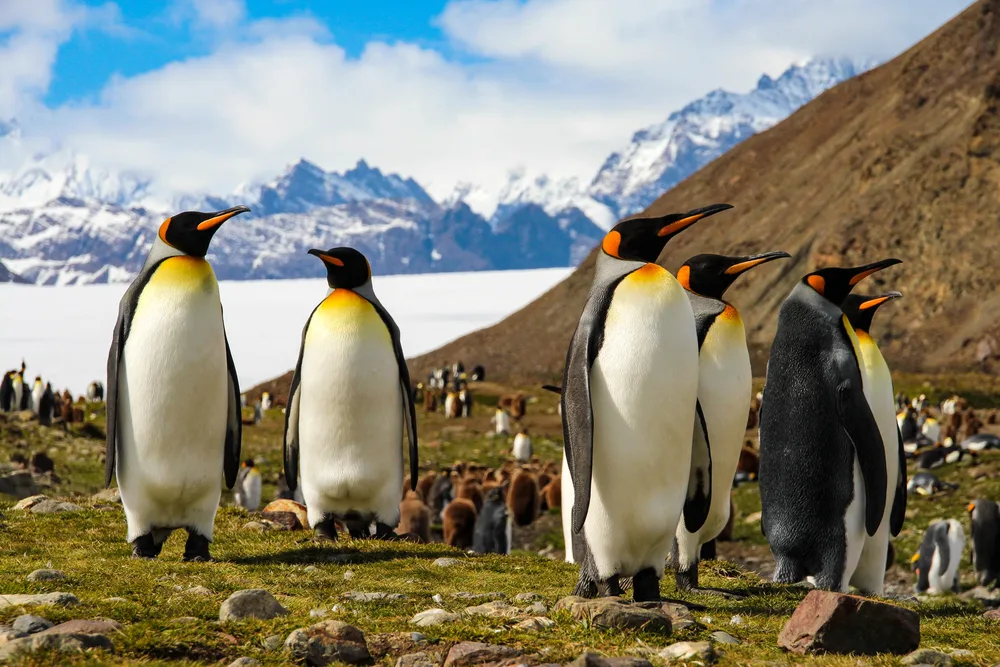
Evenfh/Shutterstock
The best time to visit Antarctica is December, during the Southern Hemisphere summer, when the weather is the least cold and it’s the easiest to explore the continent.
Make no mistake — Antarctica is never actually warm. Your choices in terms of weather are either “cold” or “very cold.” Temperatures are the least cold in December and January, which is summer in the Southern Hemisphere.
Along the coast, the mean temperature is about 34 degrees Fahrenheit in January. In June, the mean temperature is about 13 degrees Fahrenheit.
Inland Antarctica stays very cold throughout the year. Mean temperatures in January on the South Pole are -18 degrees Fahrenheit and drop down to -76 in July. Besides the temperature, Southern Hemisphere summer is also the best time to visit in terms of daylight.
Due to the polar latitude, the sun is in the sky for 24 hours a day during the Antarctic summer. You won’t have to worry about fitting in your exploration before the sun sets since the sun never sets.
December is also one of the best months to see penguins. December is when most penguins engage in their courting season, so you can see plenty of fascinating displays.
Emperor penguins court during the Antarctic winter, so by December, you can actually see small emperor penguin chicks! As the summer goes on, penguin colonies tend to get messier and smellier, so it’s better to catch them at the beginning of the season.
December and January are also the best months to spot other popular wildlife. You can see:
- Migrating humpback whales
- Seal pups
- Migrating sea birds
Many animal species don’t return to frigid Antarctic waters until the beginning of the continent’s summer, so wildlife species are at their most numerous in December and into January.
One thing to keep in mind is that December is the most popular month to travel to Antarctica. This is because people want to take advantage of both the nice weather and their vacation time that accumulates around the Christmas holidays.
If you want to travel around this time, then make sure to reserve your tickets way in advance.
Cheapest Time to Visit Antarctica
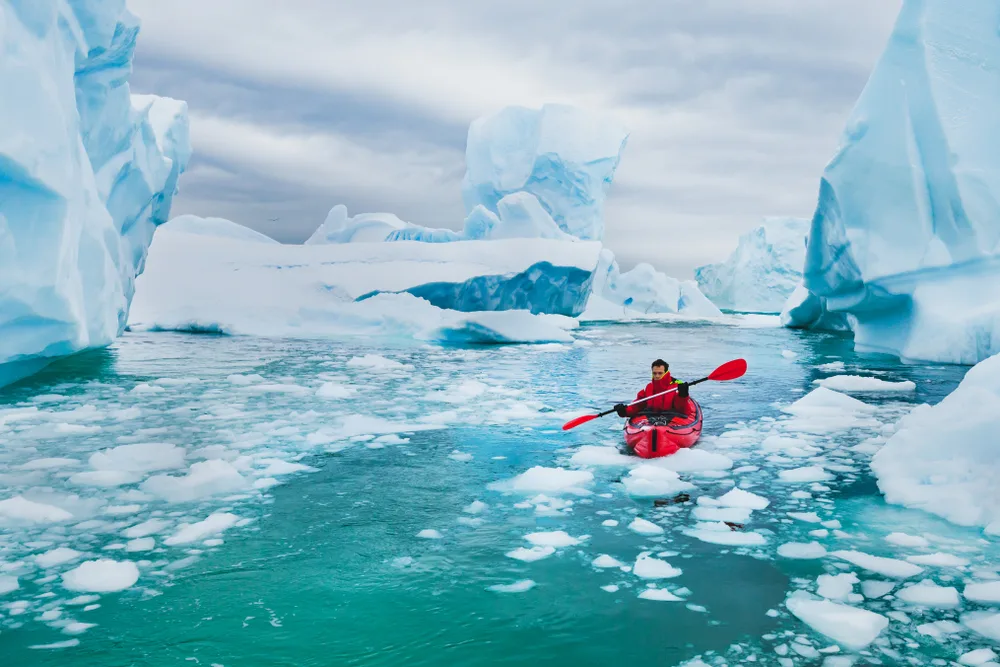
Song_about_summer/Shutterstock
The cheapest time to visit Antarctica is during the end of the season in March, but just know that a trip here is never going to be inexpensive.
One thing to keep in mind is that you will have to save up a lot of money whenever you decide to go to Antarctica. Visiting independently is impossible, so you have to visit on an organized cruise or tour. Most of these tours cost thousands of dollars.
Although Antarctica is never cheap, it can be less expensive depending on when you go. March marks the end of the summer season in Antarctica, and it’s also when fewer people wind up visiting.
Weather conditions can be a bit unpredictable towards the end of the month, but they aren’t as stormy as the depths of an Antarctic winter. There are some benefits to visiting in March, namely for the wildlife.
Penguin chicks are not as small as they are when they hatch, but this is the season when you have the highest chance of interacting with one as they get braver. Whales are still abundant in the water.
If you want to see some more remote parts of Antarctica, such as the entire Antarctic Circle and the Ross Sea, visit in late February or early March. This is the time when the sea ice is at its least abundant, making it easiest to get around the continent.
Least Busy Time to Visit Antarctica
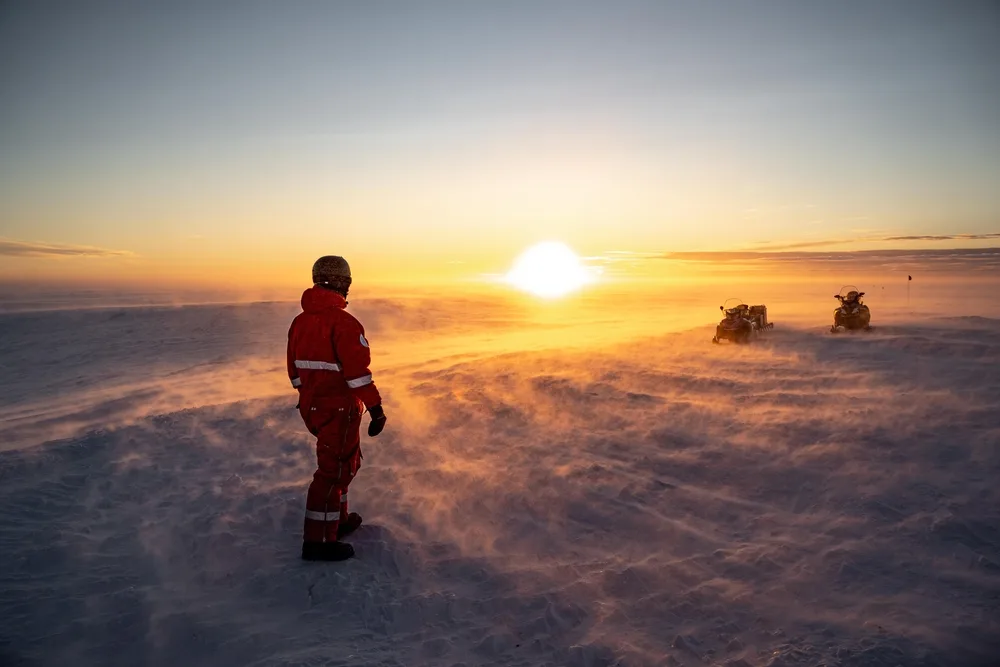
Michael Trautmann/Shutterstock
The least busy time to visit Antarctica is at the very beginning of the season, in late October and November, or at the end of the season in March.
Antarctica itself is never going to get crowded. It has no permanent human settlements and only several thousand resident scientists. The continent does receive about 100,000 visitors a year, but it is a vast landmass, so you’ll never feel crowded once you get there.
However, it can get crowded at popular departure points for Antarctica, such as Ushuaia, and on the few expeditions that leave each day for the continent. Fewer people travel to Antarctica toward the beginning of the season, in late October and November.
If you really want to have the continent to yourself, that is the best time to visit, as there will only be a few other expeditions around.
In the spring, the continent’s spectacular ice formations are still at their peak, and you can enjoy icebergs and adventurous activities such as snowshoeing. The Southern Hemisphere’s spring is the best time to combine your Antarctica trip with exploring southern Argentina and Patagonia.
If you are visiting Antarctica from New Zealand, then the best time to beat the crowds is towards the end of the season, in early fall in the Southern Hemisphere. There are fewer expeditions that leave in late February and early March, but it is still possible to see the best that the continent has to offer.
Worst Time to Visit Antarctica
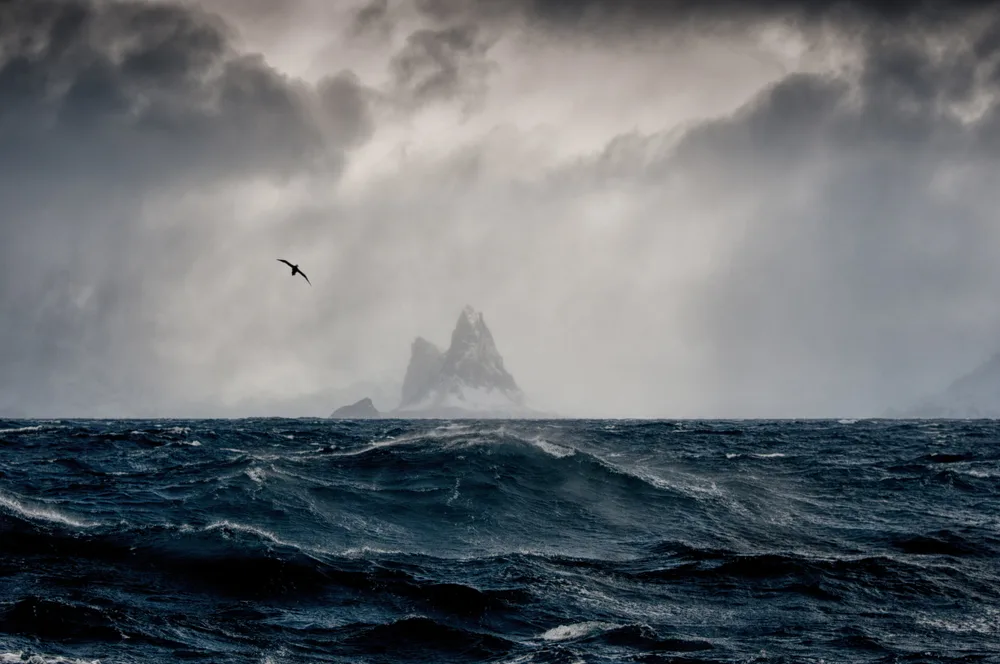
Damerau/Shutterstock
The worst time to visit Antarctica is during the Southern Hemisphere winter, between April and October, when the weather is the coldest on Earth and it’s not possible to do anything.
Remember that Antarctica is the coldest place on the planet, so the winters are probably unlike what you’re even used to. Temperatures can go down to below -70 Fahrenheit, which is unfathomably cold.
Even the Antarctic animals that are used to these cold temperatures and come with built-in layers of blubber, such as whales and seals, migrate to warmer waters during this time.
Not only is this a bad time to visit Antarctica, but it is downright impossible. Getting to Antarctica by ship is still one of the only ways to visit the continent and the only way that is widely accessible to tourists.
However, between late March and early October, sea routes are completely inaccessible due to the thickness of the sea ice. You also want to avoid the worst of the Drake Passage, a section of ocean that ships have to pass when traveling between South America and Antarctica.
The waters are rough all year round, but the chances of a seasickness-induced voyage increase during the winter when the winds and storms pick up.
Antarctica by Month: Climate & Activities
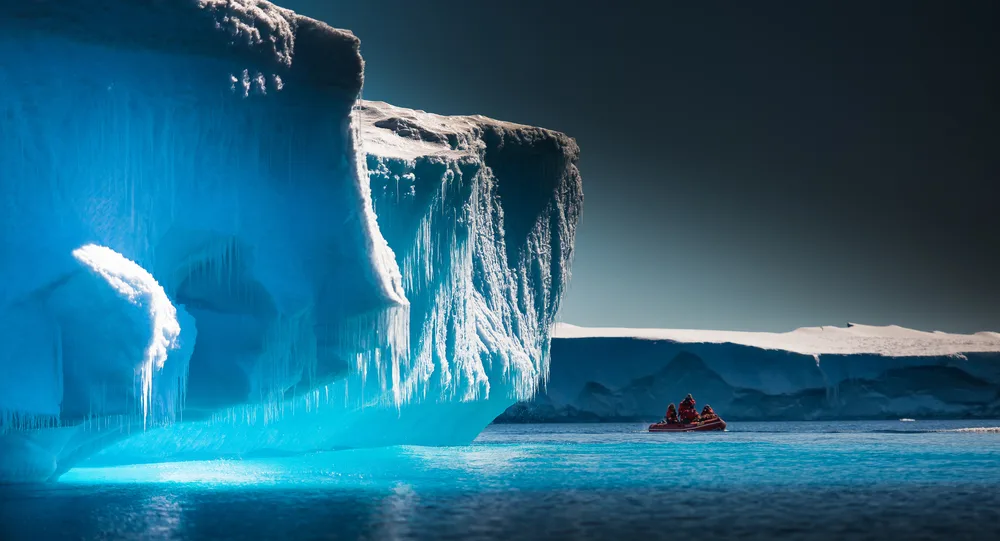
Stu Shaw/Shutterstock
Still unsure about the best time to visit Antarctica? Take a look at our summary of the weather and climate by month below:
January
January, the peak of the Antarctic summer, offers relatively mild temperatures ranging from 20 to 34°F (-6 to 1°C). It’s the perfect time for wildlife watching, with penguins, seals, and whales active and visible. Explore the continent’s remarkable landscapes, enjoy Zodiac cruises around icebergs, and visit research stations.
February
February continues the summer season, with temperatures around 18 to 36°F (-8 to 2°C). It’s ideal for capturing stunning photography of the ice and wildlife, kayaking in the icy waters, and visiting iconic sites like Deception Island.
March
As the Antarctic summer draws to a close, March sees temperatures from 14 to 30°F (-10 to -1°C). This is a great time for spotting migrating whales, observing penguin colonies, and experiencing the mesmerizing phenomenon of the southern lights, or aurora australis.
April to September
During these months, Antarctica is plunged into the long polar winter. Temperatures can drop to -20°F (-29°C) or lower, and the continent is largely inaccessible to tourists. However, it’s a critical period for scientific research, with researchers braving extreme conditions to study this unique environment.
October
October marks the return of sunlight, with temperatures from -2 to 23°F (-19 to -5°C). The ice begins to break up, allowing access for the first expeditions of the season. Witness the dramatic landscapes and the return of wildlife as the continent awakens from the polar night.
November
In November, temperatures range between 18 to 25°F (-8 to -4°C). It’s the start of the breeding season for many bird species, including penguins. Early summer expeditions often enjoy pristine snow conditions and the chance to see vast, untouched ice landscapes.
December
December, with temperatures between 20 to 36°F (-6 to 2°C), offers long daylight hours for exploring. Visit historic huts used by famous Antarctic explorers, enjoy guided hikes on the continent, and celebrate the unique experience of spending the holiday season in one of the world’s most remote locations.
Frequently Asked Questions
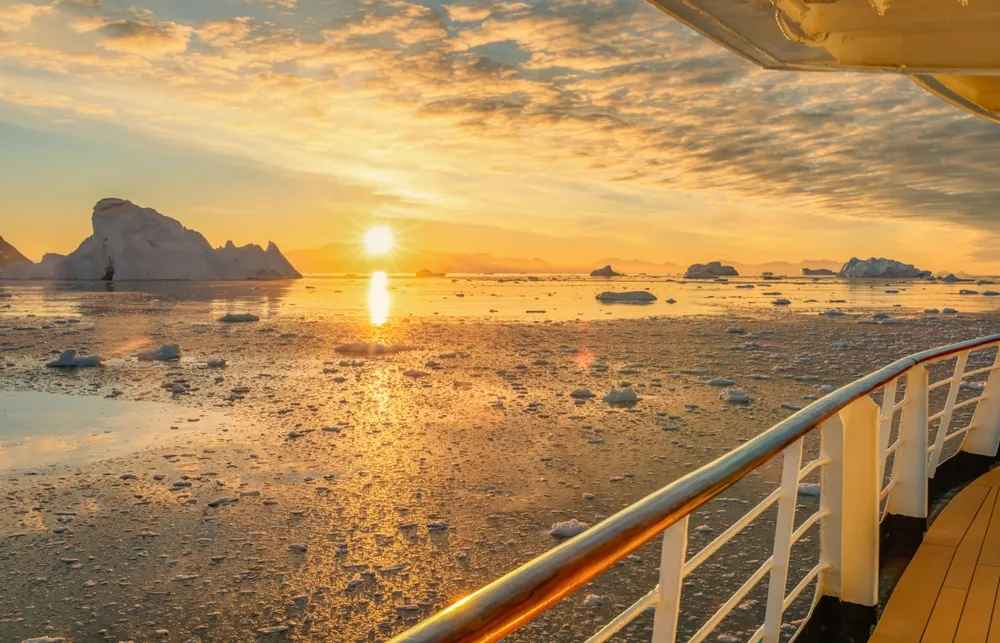
Stylefoto24/Shutterstock
Here are some common questions people also ask about finding the best time to visit Antarctica:
What is the best month to go to Antarctica?
The best months to go to Antarctica are December, January, and February when the weather conditions are the best for exploring.
How many days do you need to visit Antarctica?
Most Antarctica excursions take a minimum of 10 days. Keep in mind that it takes several days to reach the continent and get back to the nearest inhabited landmass.
How much does it cost to go to Antarctica?
Most cruises cost $5,000–$15,000, making it a very expensive trip. A relatively budget-friendly option is to go on an airplane excursion and fly over Antarctica. These trips usually cost about $1,500.
What is the warmest month in Antarctica?
The warmest month in Antarctica is January, but keep in mind that this is all relative. Temperatures during Antarctic summers usually hover around freezing.
Can a normal person go to Antarctica?
Yes, you can go to Antarctica as a normal person because there are airplane excursions and cruises catering to regular people. However, keep in mind that you will need to pay a lot of money.
So, What’s the Best Time to Visit Antarctica?
The only time to visit Antarctica is between October and March, as the sea ice is impassable the rest of the year. The best time to visit is during the summer, between December and February, when there are the most animals and the weather is the warmest.
So, with so much to see and do and a few amazing times to visit, what are you waiting for — book your trip to Antarctica today. Happy travels!



